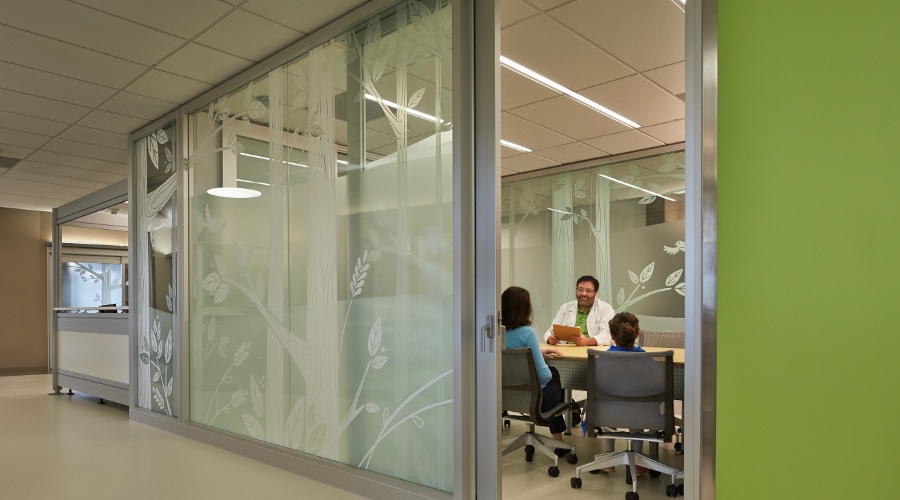Healthcare Design: Heighten Interactions by Increasing Visibility

KI recently partnered with BBH Design and Parkland Health & Hospital System to research a largely uncharted area in healthcare design: the outpatient clinic. Through thousands of observations of physicians, nurses and patients, we were able to determine that clinic design plays a vital role in the care experience. In a recent blog post, we outlined ways in which floorplans can improve communication. Today, we will explore ways of heightening patient interactions with healthcare providers by increasing visibility through design.
Visible Results
During our observations, one of the key factors we uncovered was that the more the patient interacted with their physician or caregiver, the more satisfied they were with their experience.
In a traditional clinic design, patients spend much of their time in waiting rooms which are typically isolated from the rest of the clinic and not visible to the physicians and nurses. From the waiting room, patients are then brought to exam rooms and are again left to wait. This scenario is called a “cold wait” and is shown to contribute to patient anxiety and restlessness. In this scenario there is little opportunity for patients and care givers to interact.
What happens when patients have more visibility to healthcare providers?
Our design research shows that if a patient is in a more visible area of the clinic, providers are much more likely to speak with them. The likelihood of interaction increased with each increment of visibility. This ultimately leads to a patient feeling more satisfied with their care experience.
Design Strategies for Increasing Patient Visibility
Providing patients with a visual connection to their providers is key to enhancing their overall satisfaction. Key design strategies for increasing visibility in the clinic include:
- Using architectural solutions across an entire clinic setting. Architectural wall systems, or movable walls like KI’s Evoke, Lightline or Genius walls are ideal for creating open, collaborative environments.
- Utilizing unitized glass wall systems and dividers like Lightline Wall in order to provide privacy. Glass wall systems also bring in natural light and offer aesthetically-pleasing design.
- Reducing the height of view-impeding walls to open sight lines between patients and staff
- Integrating transparency when and where walls are necessary. Mixing solid and glass architectural walls offers creative options without impinging on patient privacy. Glass may even be frosted to take patient privacy even further.
- Providing temporary privacy barriers like mobile screens. Mobile screens not only create a division of space, but can be quickly and easily moved and reconfigured. Screens specified with markerboard/writable surfaces also serve as a medium for communication. Patients and staff can use these screens for ideation or as an outlet for creativity for children.
To learn more ways to improve sight lines in clinics and in turn increase patient satisfaction, download the white paper, “The Communication Factor: Observations & Opportunities for Improving Clinic Design”.
Subscribe
Stay up to date with the latest trends and more.



